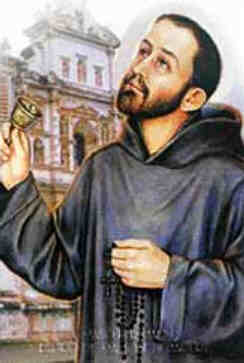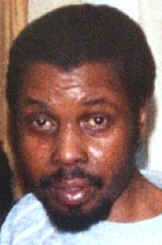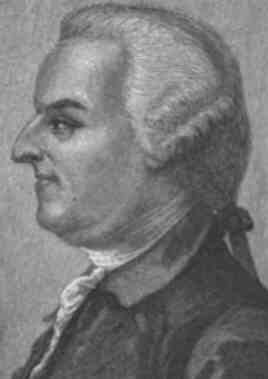Births which occurred on
a 30 July:
1942 “Women Accepted for Volunteer Emergency Service”
(WAVES) is created as part of the US Navy by a bill signed by President
Franklin Roosevelt.
1940 Patricia Schroeder (Rep-D-Colo)
1924 William Gass Fargo, ND, novelist, philosopher (Omensetter's
Luck)
1913 Alfonso López Michelsen, político liberal, novelista y ensayista
colombiano.
1909 Juan Bosch Gaviño, escritor y político dominicano.
1909 Cyril Northcote Parkinson England, historian (Pursuit of
Progress)
1898 Henry Moore,
British sculptor. As a child, he drew inspiration from the work
of Renaissance master Michelangelo. Moore later developed a
more personal modernist style, but it was some time before his
radical but majestic stone figures began to win approval. Moore
evoked form from empty space as much as he did from solids,
and he claimed that it took a lifetime to learn how to set his
sculptures into a landscape. — (Vertebrae)
English sculptor Henry Moore
is born in Castleford, Yorkshire. The son of a coal miner, he
overcame early criticism of his work to become one of the most
acclaimed sculptors of the 20th century. His majestic, semi-abstract
sculptures of the human figure are characterized by their smooth,
organic shape and often include empty hollows that evoke form
as meaningfully as solid mass.
The seventh of eight children,
Moore grew up in the small coal-mining town of Castleford in
northern England. His father was an ambitious man who taught
himself advanced mathematics in order to rise from ordinary
miner to the position of mining engineer. Moore decided he wanted
to become a sculptor at age 11, after hearing a Sunday school
story about Michelangelo. He served in France during World War
I and in 1917 was injured in a gas attack. After being demobilized
in 1919, he won a veteran's grant to study at the Leeds School
of Art in West Yorkshire. In 1921, he was awarded a scholarship
to study at the Royal College of Art in London.
At London's libraries and museums,
he studied Egyptian, Etruscan, Pre-Columbian, Oceanic, and African
sculpture, and he brought the vital spirit of this artwork into
his early sculpture. This effort was often ridiculed by his
instructors, and in his first year at the Royal College one
of his teachers remarked, "this young man has been feeding on
garbage." He was also deeply influenced by the semi-abstract
paintings of Paul Cézanne, such as the Large Bathers (1900-1905),
which shows monumental reclining nudes integrated into an abstract
landscape. The reclining human figure would become a central
theme in Moore's sculpture.
After graduating from the Royal
College in 1924, he traveled and taught art and in 1928 was
given his first one-man exhibition at the Warren Gallery in
London. Appreciated by his fellow avant-garde artists but lacking
a wider public audience, Moore taught to support himself as
he continued to develop his art. His first major mature work
was Reclining Figure in Wood (1936), a highly abstract depiction
of the human form. That year, Moore was included in the "Cubism
and Abstract Art" show at New York City's Museum of Modern Art,
which became an important patron of the English artist.
During World War II, Moore's
studio was damaged by bombs, and sculpture material was difficult
to come by. He turned to drawing and as a commissioned war artist
produced a series of drawings of Londoners huddled in the underground
bomb shelters. The Shelter Drawings (1940) seemed to capture
the spirit of the times and brought Moore his first great fame.
In 1946, he was given a major retrospective by the Museum of
Modern Art, and in 1948 he won the Grand Prize for Sculpture
at the 24th Venice Biennale. From thereon, Moore's reputation
was firmly established, and he began to receive major public
commissions for sculptures in bronze and marble.
In addition to the reclining
figure, other common themes of Moore's sculpture includes the
mother and child, family groups, and fallen warriors. Among
his major commissions were sculptures for UNESCO headquarters
in Paris (1957-58), for Lincoln Center in New York City (1963-65),
for the University of Chicago (1964-66), and for the East Building
of the National Gallery of Art in Washington, D.C. (1978). For
the last four decades of his life, he lived unostentatiously
in a farmhouse in Much Hadham, 50 km north of London. He died
in 1986.
— LINKS
— Black
Figures — Figures
in a Setting Nº1 —
Not to be confused with marine painter and watercolorist Henry
Moore (1831~1895) who painted, for example, the watercolor:
Marshy
Landscape With Rainbow. |
1889 Vladimir Zworykin electronics engineer/inventor, father of
TV.
1882 Julian Onderdonk, US artist who died in 1922.
1880 Robert Rutherford McCormick US, editor/publisher Chicago
Tribune
1869 Cristóbal Magallanes
Jara, in Totaltiche, Jalisco. ^top^
He would grow up to be the Catholic
pastor of his native village. He was a missionary among the
Huichol Indians. When the Guadalajara seminary was closed by
the Mexican anti-Catholic revolution, he oped one in his parish.
He was executed by firing squad on 25 May 1927, in Colotlán,
Jalisco. As he was facing the firing squad, to his companion
of martyrdom, Father Agustín Caloca Cortés, he said:
"Tranquilízate, hijo, sólo un momento y después el cielo."
To the soldiers he said: "Yo muero inocente, y pido a Dios
que mi sangre sirva para la unión de mis hermanos mexicanos."
Father Magallanes, Father Caloca,
and several other martyrs of the Mexican revolution were canonized
by pope John Paul II on 21 May 2000. |
1863 Henry Ford.
^top^
Trente ans plus tard, sa première
voiture à moteur faisait sensation. Ford fut le premier à fabriquer
des automobiles en série. Aujourd'hui encore, les usines Ford
de Détroit (USA) fabriquent des millions de voitures par an.
— Henry
Ford, founder of the Ford Motor Company and developer of
the Model T, who led American war production with the gigantic
facility at Willow Run. |
1858 Ignacio Ugarte y Bereciarte, pintor español.
1857 Thorsten Veblen US, economist (Theory of the Leisure Class-1899)
— VEBLEN ONLINE: The
Engineers and the Price System (PDF) — The
Higher Learning in America: A Memorandum of the Conduct of Universities
by Business Men — An
Inquiry into the Nature of Peace and the Terms of Its Perpetuation
— The
Theory of Business Enterprise — The
Theory of the Leisure Class — The
Vested Interests and the Common Man
1853 Julian Falat, Polish artist who died in 1929.
1826 Achille Jean-Baptiste Zo, French artist who died on 03 March
1901.
1818 Emily Brontë,
novelist, fifth-born of the six Brontë children, three
of whom will grow up to write fiction.
The Brontë family lived
in the remote village of Haworth on the bleak Yorkshire moors
and were largely left to their own devices after the death of
their mother when Emily was two. A shy, reclusive child, Emily
suffered intensely from homesickness whenever she left the parsonage.
She joined her three older sisters at a school for clergymen's
children when she was six, but the two oldest died, partly because
of the school's harsh and unhealthy conditions. She and Charlotte
returned home.
The girls, along with sister
Anne and brother Branwell, read voraciously and created their
own elaborate stories about mythical lands. Many of Emily's
poems were written about these imaginary realms. Brontë
was well educated at home and worked several short, unhappy
stints as a governess and schoolteacher. In 1842, Emily and
Charlotte went to Brussels to study school administration, hoping
to open their own school in Haworth one day, which they never
accomplished.
In 1845, Charlotte came across
some poems Emily had written and revealed that she too had secretly
been writing verse. So had Anne, they learned. Charlotte published
their joint work, Poems
by Currer, Ellis, and Acton Bell, in 1846. Although
the book sold only two copies, the sisters continued writing.
Jane
Eyre appeared in 1847, an instant success. Emily's Wuthering
Heights and Anne's Agnes
Grey were printed later that year. Unfortunately, neither
one caught on with the public. Emily died of tuberculosis a
year after her novel was published. A second edition of Wuthering
Heights, published in 1850, included a preface by Charlotte,
explaining that the book was superior to her own Jane
Eyre. Wuthering
Heights is now considered a classic.
ONLINE: by Emily, Charlotte, and Anne (two different sites):
Poems by Currer, Ellis, and Acton Bell,
Poems by Currer, Ellis, and Acton Bell |
| Emily online: (five different sites):
Wuthering Heights
Wuthering Heights
Wuthering Heights
Wuthering Heights
Wuthering Heights (zipped PDF)
|
Charlotte online: (different sites)
Jane Eyre
Jane Eyre
Jane Eyre
Jane Eyre (zipped PDF)
The Professor
The Professor
The Professor (zipped PDF)
Shirley Shirley
Villette
|
Anne online: (different sites)
Agnes Grey
Agnes Grey
Selected Works and Commentary.
The Tenant of Wildfell Hall
The Tenant of Wildfell Hall
|
1729 The city of Baltimore is founded.
1699 Giuseppe Marchesi “il Sansone”, Italian artist
who died on 16 February 1771.
1581 Alonso Jerónimo de Salas Barbadillo, escritor español.
1511 Giorgio Vasari, Italian Mannerist
painter, architect, and writer of Le
vite de' più eccellenti architetti, pittori, et scultori italiani, da
Cimabue insino a' tempi nostri [1550, zipped]. In 1568 Vasari
added his autobiography and the lives of Michelangelo
and other major painters of the time. Vasari died on 27 June 1574. —
writings by VASARI ONLINE: Lives of the Most Excellent Italian Architects,
Painters, and Sculptors, from Cimabue Until Our Times [selections
in English translation] [illustrations
with quotes from English translation]
— MORE
ON VASARI AT ART “4” JULY —
LINKS
— Figure
Composition — Toeletta
Venere — The Holy
Family — Christ at Gethsemani
— The Prophet Elisha
— Perseo e Andromeda |


 Deaths
Deaths 2002
Anthony Stuckey, 49, and Jack Moore, 62, [smaller photo >]
after being punched, kicked, and beaten by a half-dozen bystanders with
bricks that came off the side of the building (in the 3900 block of South
Lake Park Avenue in the Oakland neigborhood of Chicago's South Side)
into which their rental van [< photo] crashed at 18:35
after jumping a curb and hitting Shauna Lawrence, 26 (in critical condition),
her cousin Jenny Lawrence, 18 (in fair condition), and a 17-year-old
girl (in fair condition), who have to be hospitalized. Stuckey [larger
photo >] did not have a driver's license. It is not known
which of the two was driving.
2002
Anthony Stuckey, 49, and Jack Moore, 62, [smaller photo >]
after being punched, kicked, and beaten by a half-dozen bystanders with
bricks that came off the side of the building (in the 3900 block of South
Lake Park Avenue in the Oakland neigborhood of Chicago's South Side)
into which their rental van [< photo] crashed at 18:35
after jumping a curb and hitting Shauna Lawrence, 26 (in critical condition),
her cousin Jenny Lawrence, 18 (in fair condition), and a 17-year-old
girl (in fair condition), who have to be hospitalized. Stuckey [larger
photo >] did not have a driver's license. It is not known
which of the two was driving.